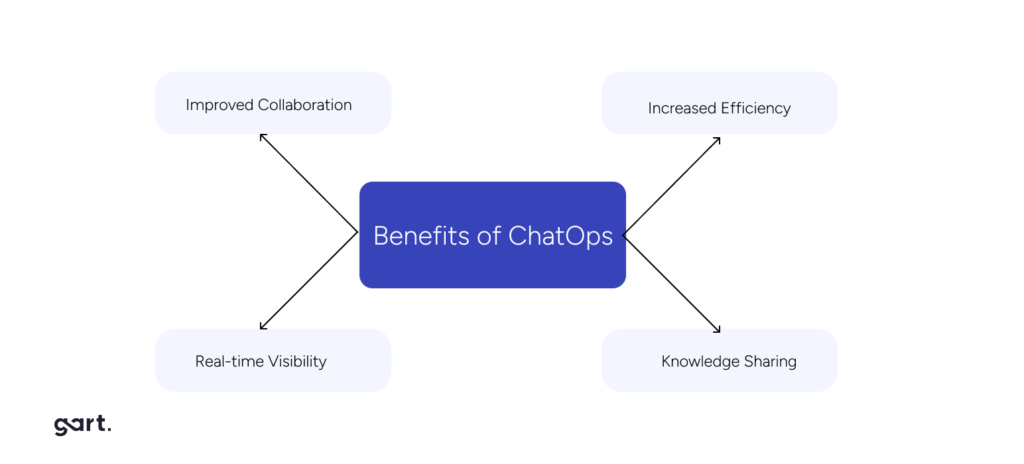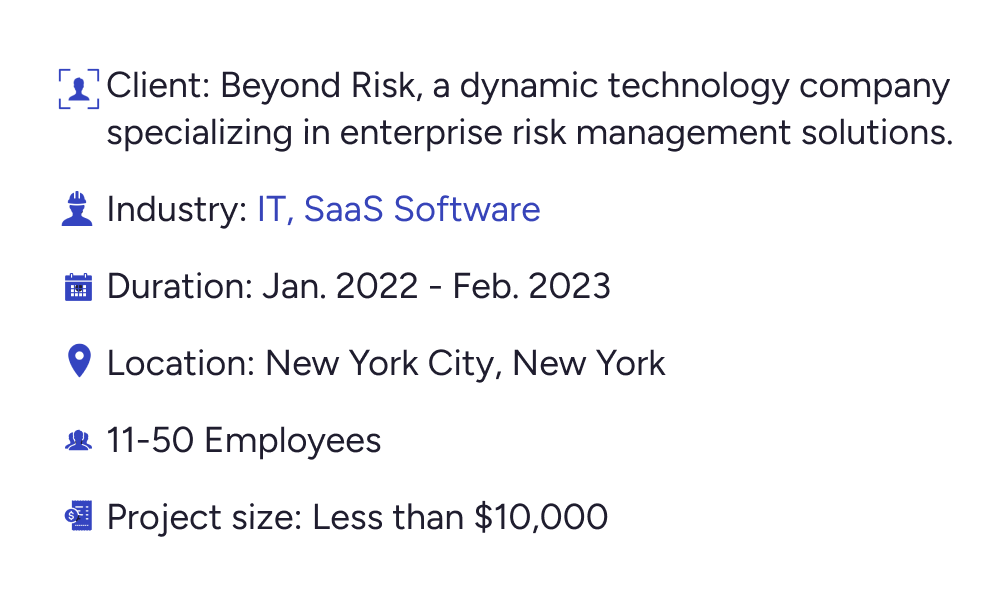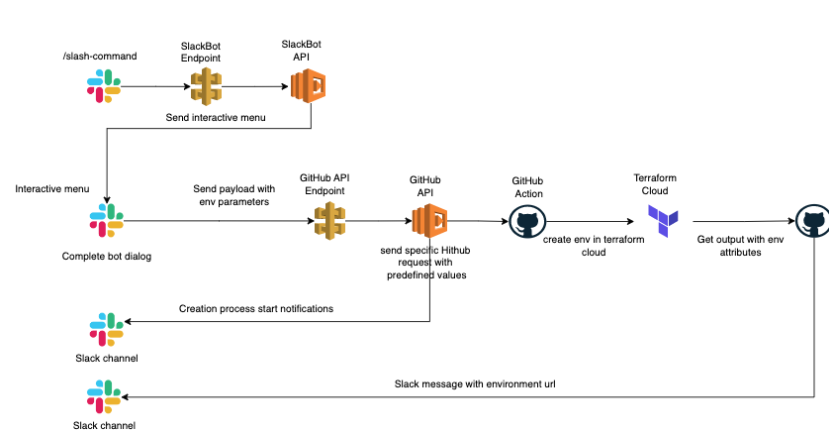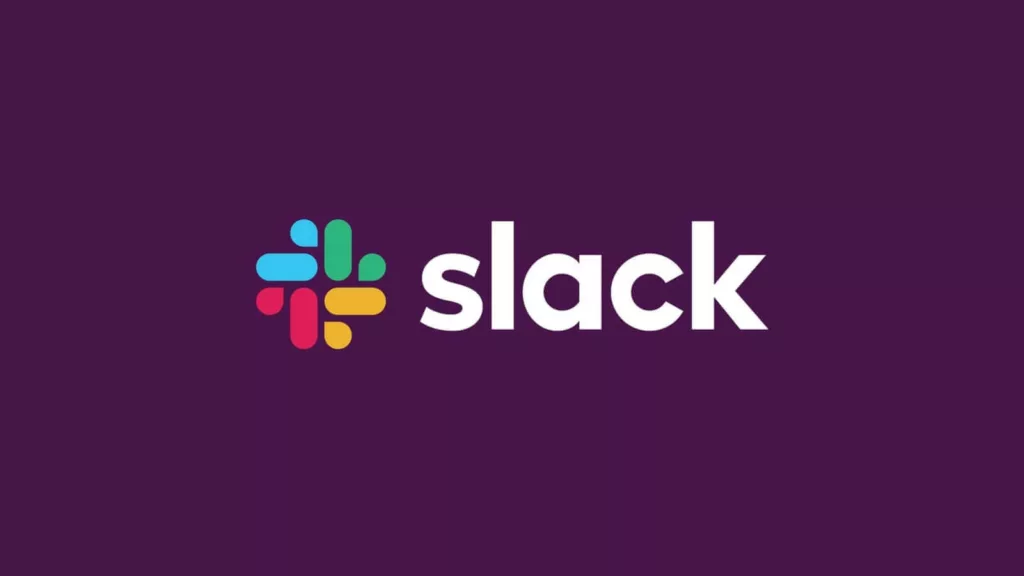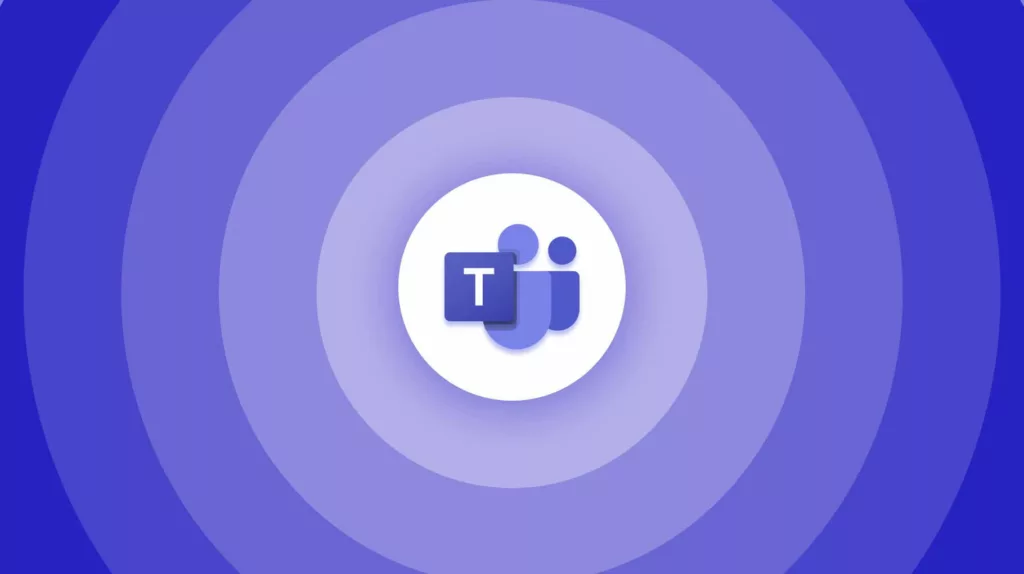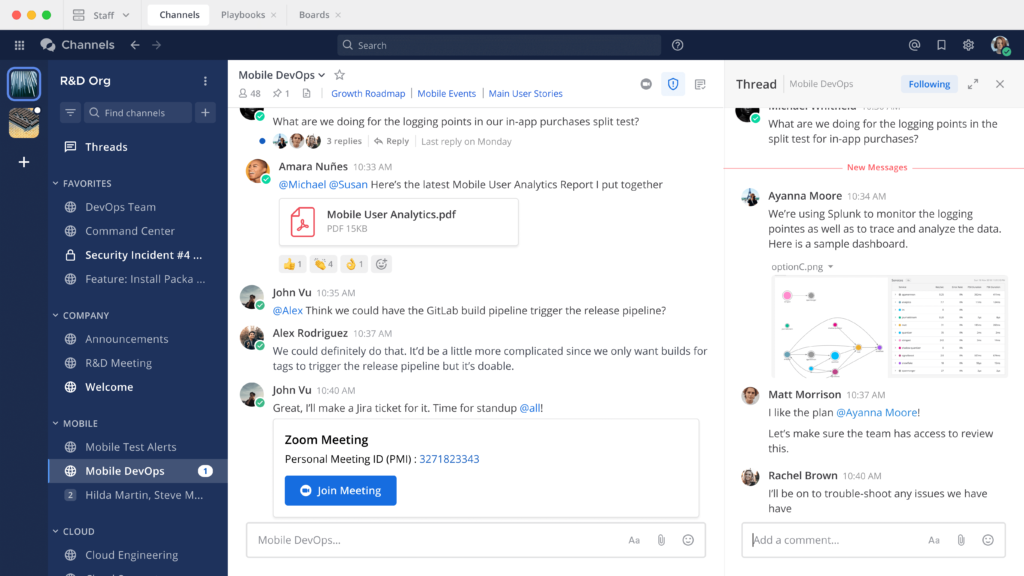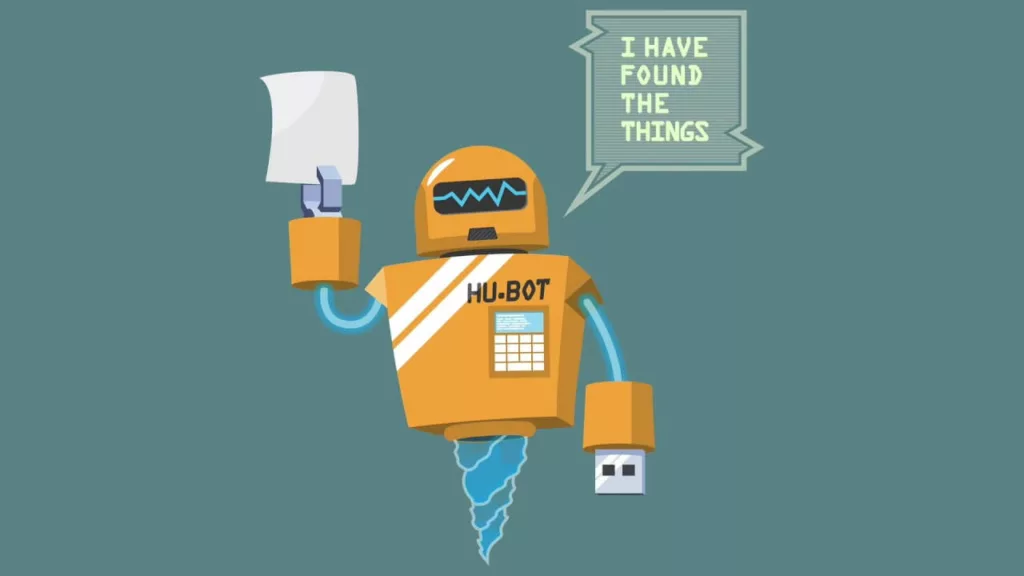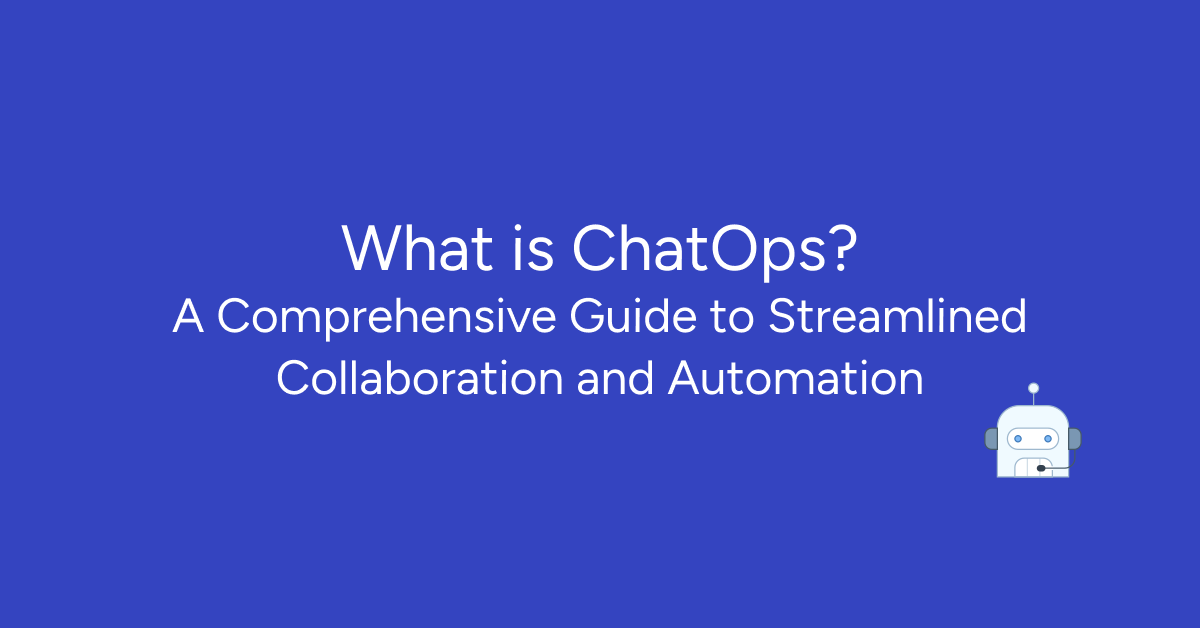
By treating infrastructure as software code, IaC empowers teams to leverage the benefits of version control, automation, and repeatability in their cloud deployments.
This article explores the key concepts and benefits of IaC, shedding light on popular tools such as Terraform, Ansible, SaltStack, and Google Cloud Deployment Manager. We'll delve into their features, strengths, and use cases, providing insights into how they enable developers and operations teams to streamline their infrastructure management processes.
IaC Tools Comparison Table
IaC ToolDescriptionSupported Cloud ProvidersTerraformOpen-source tool for infrastructure provisioningAWS, Azure, GCP, and moreAnsibleConfiguration management and automation platformAWS, Azure, GCP, and moreSaltStackHigh-speed automation and orchestration frameworkAWS, Azure, GCP, and morePuppetDeclarative language-based configuration managementAWS, Azure, GCP, and moreChefInfrastructure automation frameworkAWS, Azure, GCP, and moreCloudFormationAWS-specific IaC tool for provisioning AWS resourcesAmazon Web Services (AWS)Google Cloud Deployment ManagerInfrastructure management tool for Google Cloud PlatformGoogle Cloud Platform (GCP)Azure Resource ManagerAzure-native tool for deploying and managing resourcesMicrosoft AzureOpenStack HeatOrchestration engine for managing resources in OpenStackOpenStackInfrastructure as a Code Tools Table
Exploring the Landscape of IaC Tools
The IaC paradigm is widely embraced in modern software development, offering a range of tools for deployment, configuration management, virtualization, and orchestration. Prominent containerization and orchestration tools like Docker and Kubernetes employ YAML to express the desired end state. HashiCorp Packer is another tool that leverages JSON templates and variables for creating system snapshots.
The most popular configuration management tools, namely Ansible, Chef, and Puppet, adopt the IaC approach to define the desired state of the servers under their management.
Ansible functions by bootstrapping servers and orchestrating them based on predefined playbooks. These playbooks, written in YAML, outline the operations Ansible will execute and the targeted resources it will operate on. These operations can include starting services, installing packages via the system's package manager, or executing custom bash commands.
Both Chef and Puppet operate through central servers that issue instructions for orchestrating managed servers. Agent software needs to be installed on the managed servers. While Chef employs Ruby to describe resources, Puppet has its own declarative language.
Terraform seamlessly integrates with other IaC tools and DevOps systems, excelling in provisioning infrastructure resources rather than software installation and initial server configuration.
Unlike configuration management tools like Ansible and Chef, Terraform is not designed for installing software on target resources or scheduling tasks. Instead, Terraform utilizes providers to interact with supported resources.
Terraform can operate on a single machine without the need for a master or managed servers, unlike some other tools. It does not actively monitor the actual state of resources and automatically reapply configurations. Its primary focus is on orchestration. Typically, the workflow involves provisioning resources with Terraform and using a configuration management tool for further customization if necessary.
For Chef, Terraform provides a built-in provider that configures the client on the orchestrated remote resources. This allows for automatic addition of all orchestrated servers to the master server and further customization using Chef cookbooks (Chef's infrastructure declarations).
Optimize your infrastructure management with our DevOps expertise. Harness the power of IaC tools for streamlined provisioning, configuration, and orchestration. Scale efficiently and achieve seamless deployments. Contact us now.
Popular Infrastructure as Code Tools
Terraform
Terraform, introduced by HashiCorp in 2014, is an open-source Infrastructure as Code (IaC) solution. It operates based on a declarative approach to managing infrastructure, allowing you to define the desired end state of your infrastructure in a configuration file. Terraform then works to bring the infrastructure to that desired state. This configuration is applied using the PUSH method. Written in the Go programming language, Terraform incorporates its own language known as HashiCorp Configuration Language (HCL), which is used for writing configuration files that automate infrastructure management tasks.
Download: https://github.com/hashicorp/terraform
Terraform operates by analyzing the infrastructure code provided and constructing a graph that represents the resources and their relationships. This graph is then compared with the cached state of resources in the cloud. Based on this comparison, Terraform generates an execution plan that outlines the necessary changes to be applied to the cloud in order to achieve the desired state, including the order in which these changes should be made.
Within Terraform, there are two primary components: providers and provisioners. Providers are responsible for interacting with cloud service providers, handling the creation, management, and deletion of resources. On the other hand, provisioners are used to execute specific actions on the remote resources created or on the local machine where the code is being processed.
Terraform offers support for managing fundamental components of various cloud providers, such as compute instances, load balancers, storage, and DNS records. Additionally, Terraform's extensibility allows for the incorporation of new providers and provisioners.
In the realm of Infrastructure as Code (IaC), Terraform's primary role is to ensure that the state of resources in the cloud aligns with the state expressed in the provided code. However, it's important to note that Terraform does not actively track deployed resources or monitor the ongoing bootstrapping of prepared compute instances. The subsequent section will delve into the distinctions between Terraform and other tools, as well as how they complement each other within the workflow.
Real-World Examples of Terraform Usage
Terraform has gained immense popularity across various industries due to its versatility and user-friendly nature. Here are a few real-world examples showcasing how Terraform is being utilized:
CI/CD Pipelines and Infrastructure for E-Health Platform
For our client, a development company specializing in Electronic Medical Records Software (EMRS) for government-based E-Health platforms and CRM systems in medical facilities, we leveraged Terraform to create the infrastructure using VMWare ESXi. This allowed us to harness the full capabilities of the local cloud provider, ensuring efficient and scalable deployments.
Implementation of Nomad Cluster for Massively Parallel Computing
Our client, S-Cube, is a software development company specializing in creating a product based on a waveform inversion algorithm for building Earth models. They sought to enhance their infrastructure by separating the software from the underlying infrastructure, allowing them to focus solely on application development without the burden of infrastructure management.
To assist S-Cube in achieving their goals, Gart Solutions stepped in and leveraged the latest cloud development techniques and technologies, including Terraform. By utilizing Terraform, Gart Solutions helped restructure the architecture of S-Cube's SaaS platform, making it more economically efficient and scalable.
The Gart Solutions team worked closely with S-Cube to develop a new approach that takes infrastructure management to the next level. By adopting Terraform, they were able to define their infrastructure as code, enabling easy provisioning and management of resources across cloud and on-premises environments. This approach offered S-Cube the flexibility to run their workloads in both containerized and non-containerized environments, adapting to their specific requirements.
Streamlining Presale Processes with ChatOps Automation
Our client, Beyond Risk, is a dynamic technology company specializing in enterprise risk management solutions. They faced several challenges related to environmental management, particularly in managing the existing environment architecture and infrastructure code conditions, which required significant effort.
To address these challenges, Gart implemented ChatOps Automation to streamline the presale processes. The implementation involved utilizing the Slack API to create an interactive flow, AWS Lambda for implementing the business logic, and GitHub Action + Terraform Cloud for infrastructure automation.
One significant improvement was the addition of a Notification step, which helped us track the success or failure of Terraform operations. This allowed us to stay informed about the status of infrastructure changes and take appropriate actions accordingly.
Unlock the full potential of your infrastructure with our DevOps expertise. Maximize scalability and achieve flawless deployments. Drop us a line right now!
AWS CloudFormation
AWS CloudFormation is a powerful Infrastructure as Code (IaC) tool provided by Amazon Web Services (AWS). It simplifies the provisioning and management of AWS resources through the use of declarative CloudFormation templates. Here are the key features and benefits of AWS CloudFormation, its declarative infrastructure management approach, its integration with other AWS services, and some real-world case studies showcasing its adoption.
Key Features and Advantages:
Infrastructure as Code: CloudFormation enables you to define and manage your infrastructure resources using templates written in JSON or YAML. This approach ensures consistent, repeatable, and version-controlled deployments of your infrastructure.
Automation and Orchestration: CloudFormation automates the provisioning and configuration of resources, ensuring that they are created, updated, or deleted in a controlled and predictable manner. It handles resource dependencies, allowing for the orchestration of complex infrastructure setups.
Infrastructure Consistency: With CloudFormation, you can define the desired state of your infrastructure and deploy it consistently across different environments. This reduces configuration drift and ensures uniformity in your infrastructure deployments.
Change Management: CloudFormation utilizes stacks to manage infrastructure changes. Stacks enable you to track and control updates to your infrastructure, ensuring that changes are applied consistently and minimizing the risk of errors.
Scalability and Flexibility: CloudFormation supports a wide range of AWS resource types and features. This allows you to provision and manage compute instances, databases, storage volumes, networking components, and more. It also offers flexibility through custom resources and supports parameterization for dynamic configurations.
Case studies showcasing CloudFormation adoption
Netflix leverages CloudFormation for managing their infrastructure deployments at scale. They use CloudFormation templates to provision resources, define configurations, and enable repeatable deployments across different regions and accounts.
Yelp utilizes CloudFormation to manage their AWS infrastructure. They use CloudFormation templates to provision and configure resources, enabling them to automate and simplify their infrastructure deployments.
Dow Jones, a global news and business information provider, utilizes CloudFormation for managing their AWS resources. They leverage CloudFormation to define and provision their infrastructure, enabling faster and more consistent deployments.
Ansible
Perhaps Ansible is the most well-known configuration management system used by DevOps engineers. This system is written in the Python programming language and uses a declarative markup language to describe configurations. It utilizes the PUSH method for automating software configuration and deployment.
What are the main differences between Ansible and Terraform? Ansible is a versatile automation tool that can be used to solve various tasks, while Terraform is a tool specifically designed for "infrastructure as code" tasks, which means transforming configuration files into functioning infrastructure.
Use cases highlighting Ansible's versatility
Configuration Management: Ansible is commonly used for configuration management, allowing you to define and enforce the desired configurations across multiple servers or network devices. It ensures consistency and simplifies the management of configuration drift.
Application Deployment: Ansible can automate the deployment of applications by orchestrating the installation, configuration, and updates of application components and their dependencies. This enables faster and more reliable application deployments.
Cloud Provisioning: Ansible integrates seamlessly with various cloud providers, enabling the provisioning and management of cloud resources. It allows you to define infrastructure in a cloud-agnostic way, making it easy to deploy and manage infrastructure across different cloud platforms.
Continuous Delivery: Ansible can be integrated into a continuous delivery pipeline to automate the deployment and testing of applications. It allows for efficient and repeatable deployments, reducing manual errors and accelerating the delivery of software updates.
Google Cloud Deployment Manager
Google Cloud Deployment Manager is a robust Infrastructure as Code (IaC) solution offered by Google Cloud Platform (GCP). It empowers users to define and manage their infrastructure resources using Deployment Manager templates, which facilitate automated and consistent provisioning and configuration.
By utilizing YAML or Jinja2-based templates, Deployment Manager enables the definition and configuration of infrastructure resources. These templates specify the desired state of resources, encompassing various GCP services, networks, virtual machines, storage, and more. Users can leverage templates to define properties, establish dependencies, and establish relationships between resources, facilitating the creation of intricate infrastructures.
Deployment Manager seamlessly integrates with a diverse range of GCP services and ecosystems, providing comprehensive resource management capabilities. It supports GCP's native services, including Compute Engine, Cloud Storage, Cloud SQL, Cloud Pub/Sub, among others, enabling users to effectively manage their entire infrastructure.
Puppet
Puppet is a widely adopted configuration management tool that helps automate the management and deployment of infrastructure resources. It provides a declarative language and a flexible framework for defining and enforcing desired system configurations across multiple servers and environments.
Puppet enables efficient and centralized management of infrastructure configurations, making it easier to maintain consistency and enforce desired states across a large number of servers. It automates repetitive tasks, such as software installations, package updates, file management, and service configurations, saving time and reducing manual errors.
Puppet operates using a client-server model, where Puppet agents (client nodes) communicate with a central Puppet server to retrieve configurations and apply them locally. The Puppet server acts as a repository for configurations and distributes them to the agents based on predefined rules.
Pulumi
Pulumi is a modern Infrastructure as Code (IaC) tool that enables users to define, deploy, and manage infrastructure resources using familiar programming languages. It combines the concepts of IaC with the power and flexibility of general-purpose programming languages to provide a seamless and intuitive infrastructure management experience.
Pulumi has a growing ecosystem of libraries and plugins, offering additional functionality and integrations with external tools and services. Users can leverage existing libraries and modules from their programming language ecosystems, enhancing the capabilities of their infrastructure code.
There are often situations where it is necessary to deploy an application simultaneously across multiple clouds, combine cloud infrastructure with a managed Kubernetes cluster, or anticipate future service migration. One possible solution for creating a universal configuration is to use the Pulumi project, which allows for deploying applications to various clouds (GCP, Amazon, Azure, AliCloud), Kubernetes, providers (such as Linode, Digital Ocean), virtual infrastructure management systems (OpenStack), and local Docker environments.
Pulumi integrates with popular CI/CD systems and Git repositories, allowing for the creation of infrastructure as code pipelines.
Users can automate the deployment and management of infrastructure resources as part of their overall software delivery process.
SaltStack
SaltStack is a powerful Infrastructure as Code (IaC) tool that automates the management and configuration of infrastructure resources at scale. It provides a comprehensive solution for orchestrating and managing infrastructure through a combination of remote execution, configuration management, and event-driven automation.
SaltStack enables remote execution across a large number of servers, allowing administrators to execute commands, run scripts, and perform tasks on multiple machines simultaneously. It provides a robust configuration management framework, allowing users to define desired states for infrastructure resources and ensure their continuous enforcement.
SaltStack is designed to handle massive infrastructures efficiently, making it suitable for organizations with complex and distributed environments.
The SaltStack solution stands out compared to others mentioned in this article. When creating SaltStack, the primary goal was to achieve high speed. To ensure high performance, the architecture of the solution is based on the interaction between the Salt-master server components and Salt-minion clients, which operate in push mode using Salt-SSH.
The project is developed in Python and is hosted in the repository at https://github.com/saltstack/salt.
The high speed is achieved through asynchronous task execution. The idea is that the Salt Master communicates with Salt Minions using a publish/subscribe model, where the master publishes a task and the minions receive and asynchronously execute it. They interact through a shared bus, where the master sends a single message specifying the criteria that minions must meet, and they start executing the task. The master simply waits for information from all sources, knowing how many minions to expect a response from. To some extent, this operates on a "fire and forget" principle.
In the event of the master going offline, the minion will still complete the assigned work, and upon the master's return, it will receive the results.
The interaction architecture can be quite complex, as illustrated in the vRealize Automation SaltStack Config diagram below.
When comparing SaltStack and Ansible, due to architectural differences, Ansible spends more time processing messages. However, unlike SaltStack's minions, which essentially act as agents, Ansible does not require agents to function. SaltStack is significantly easier to deploy compared to Ansible, which requires a series of configurations to be performed. SaltStack does not require extensive script writing for its operation, whereas Ansible is quite reliant on scripting for interacting with infrastructure.
Additionally, SaltStack can have multiple masters, so if one fails, control is not lost. Ansible, on the other hand, can have a secondary node in case of failure. Finally, SaltStack is supported by GitHub, while Ansible is supported by Red Hat.
SaltStack integrates seamlessly with cloud platforms, virtualization technologies, and infrastructure services.
It provides built-in modules and functions for interacting with popular cloud providers, making it easier to manage and provision resources in cloud environments.
SaltStack offers a highly extensible framework that allows users to create custom modules, states, and plugins to extend its functionality.
It has a vibrant community contributing to a rich ecosystem of Salt modules and extensions.
Chef
Chef is a widely recognized and powerful Infrastructure as Code (IaC) tool that automates the management and configuration of infrastructure resources. It provides a comprehensive framework for defining, deploying, and managing infrastructure across various platforms and environments.
Chef allows users to define infrastructure configurations as code, making it easier to manage and maintain consistent configurations across multiple servers and environments.
It uses a declarative language called Chef DSL (Domain-Specific Language) to define the desired state of resources and systems.
Chef Solo
Chef also offers a standalone mode called Chef Solo, which does not require a central Chef server.
Chef Solo allows for the local execution of cookbooks and recipes on individual systems without the need for a server-client setup.
Benefits of Infrastructure as Code Tools
Infrastructure as Code (IaC) tools offer numerous benefits that contribute to efficient, scalable, and reliable infrastructure management.
IaC tools automate the provisioning, configuration, and management of infrastructure resources. This automation eliminates manual processes, reducing the potential for human error and increasing efficiency.
With IaC, infrastructure configurations are defined and deployed consistently across all environments. This ensures that infrastructure resources adhere to desired states and defined standards, leading to more reliable and predictable deployments.
IaC tools enable easy scalability by providing the ability to define infrastructure resources as code. Scaling up or down becomes a matter of modifying the code or configuration, allowing for rapid and flexible infrastructure adjustments to meet changing demands.
Infrastructure code can be stored and version-controlled using tools like Git. This enables collaboration among team members, tracking of changes, and easy rollbacks to previous configurations if needed.
Infrastructure code can be structured into reusable components, modules, or templates. These components can be shared across projects and environments, promoting code reusability, reducing duplication, and speeding up infrastructure deployment.
Infrastructure as Code tools automate the provisioning and deployment processes, significantly reducing the time required to set up and configure infrastructure resources. This leads to faster application deployment and delivery cycles.
Infrastructure as Code tools provide an audit trail of infrastructure changes, making it easier to track and document modifications. They also assist in achieving compliance by enforcing predefined policies and standards in infrastructure configurations.
Infrastructure code can be used to recreate and recover infrastructure quickly in the event of a disaster. By treating infrastructure as code, organizations can easily reproduce entire environments, reducing downtime and improving disaster recovery capabilities.
IaC tools abstract infrastructure configurations from specific cloud providers, allowing for portability across multiple cloud platforms. This flexibility enables organizations to leverage different cloud services based on specific requirements or to migrate between cloud providers easily.
Infrastructure as Code tools provide visibility into infrastructure resources and their associated costs. This visibility enables organizations to optimize resource allocation, identify unused or underutilized resources, and make informed decisions for cost optimization.
Considerations for Choosing an IaC Tool
When selecting an Infrastructure as Code (IaC) tool, it's essential to consider various factors to ensure it aligns with your specific requirements and goals.
Compatibility with Infrastructure and Environments
Determine if the IaC tool supports the infrastructure platforms and technologies you use, such as public clouds (AWS, Azure, GCP), private clouds, containers, or on-premises environments.
Check if the tool integrates well with existing infrastructure components and services you rely on, such as databases, load balancers, or networking configurations.
Supported Programming Languages
Consider the programming languages supported by the IaC tool. Choose a tool that offers support for languages that your team is familiar with and comfortable using.
Ensure that the tool's supported languages align with your organization's coding standards and preferences.
Learning Curve and Ease of Use
Evaluate the learning curve associated with the IaC tool. Consider the complexity of its syntax, the availability of documentation, tutorials, and community support.
Determine if the tool provides an intuitive and user-friendly interface or a command-line interface (CLI) that suits your team's preferences and skill sets.
Declarative or Imperative Approach
Decide whether you prefer a declarative or imperative approach to infrastructure management.
Declarative tools focus on defining the desired state of infrastructure resources, while imperative Infrastructure as Code tools allow more procedural control over infrastructure changes.
Consider which approach aligns better with your team's mindset and infrastructure management style.
Extensibility and Customization
Evaluate the extensibility and customization options provided by the IaC tool. Check if it allows the creation of custom modules, plugins, or extensions to meet specific requirements.
Consider the availability of a vibrant community and ecosystem around the tool, providing additional resources, libraries, and community-contributed content.
Collaboration and Version Control
Assess the tool's collaboration features and support for version control systems like Git.
Determine if it allows multiple team members to work simultaneously on infrastructure code, provides conflict resolution mechanisms, and supports code review processes.
Security and Compliance
Examine the tool's security features and its ability to meet security and compliance requirements.
Consider features like access controls, encryption, secrets management, and compliance auditing capabilities to ensure the tool aligns with your organization's security standards.
Community and Support
Evaluate the size and activity of the tool's community, as it can greatly impact the availability of resources, forums, and support.
Consider factors like the frequency of updates, bug fixes, and the responsiveness of the tool's maintainers to address issues or feature requests.
Cost and Licensing
Assess the licensing model of the IaC tool. Some Infrastructure as Code Tools may have open-source versions with community support, while others offer enterprise editions with additional features and support.
Consider the total cost of ownership, including licensing fees, training costs, infrastructure requirements, and ongoing maintenance.
Roadmap and Future Development
Research the tool's roadmap and future development plans to ensure its continued relevance and compatibility with evolving technologies and industry trends.
By considering these factors, you can select Infrastructure as Code Tools that best fits your organization's needs, infrastructure requirements, team capabilities, and long-term goals.
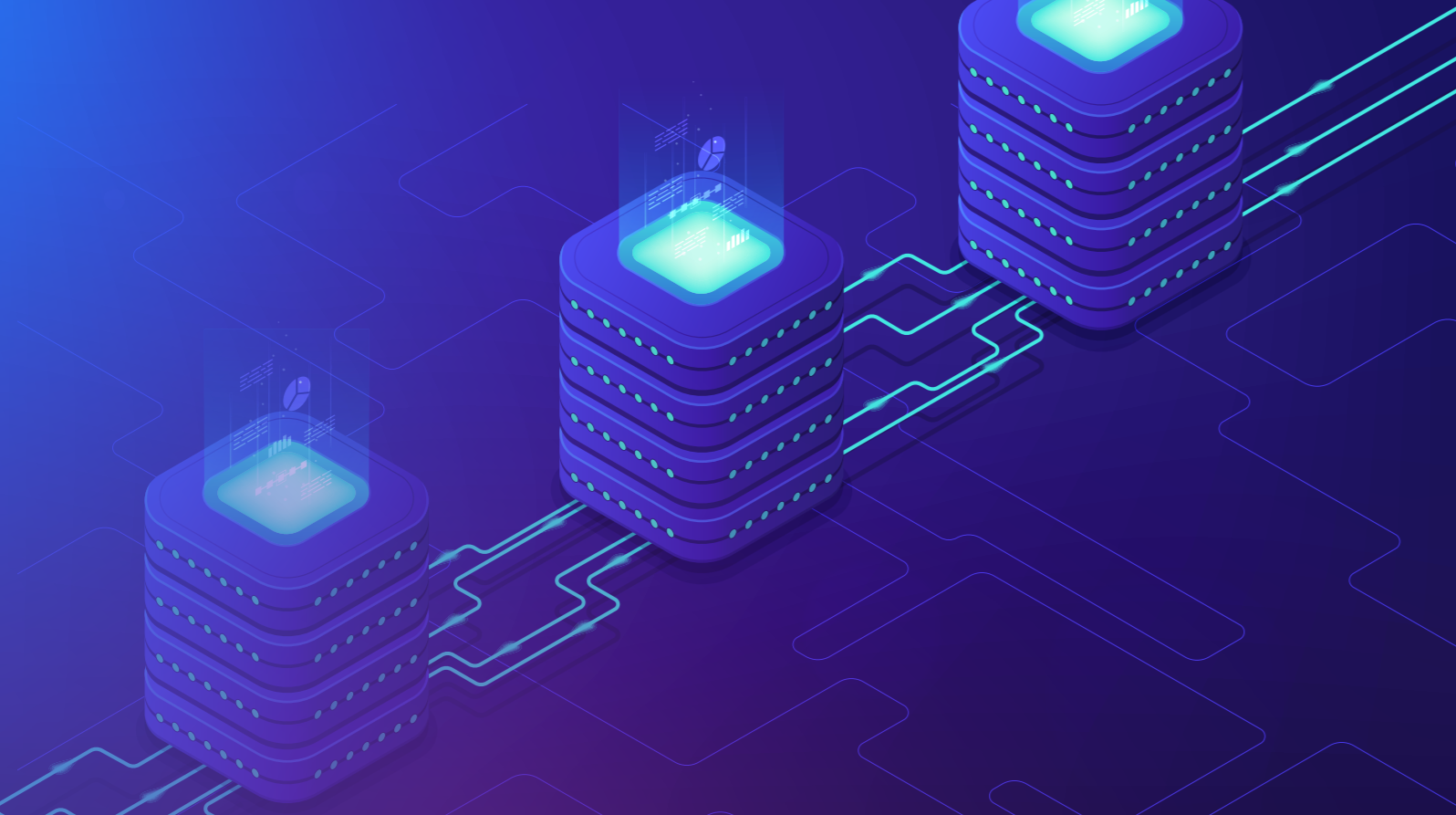
In today's digital world, businesses rely heavily on their IT infrastructure to operate effectively. Any downtime or performance issues can result in lost productivity, revenue, and brand reputation. This is where infrastructure monitoring comes in.
What Is Infrastructure Monitoring?
Infrastructure monitoring plays a vital role in collecting and analyzing data from various components of a tech stack, including servers, virtual machines, containers, and databases. This data is then analyzed to provide insights into the health and performance of the infrastructure. The tools also provide alerts and notifications when issues are detected, enabling IT teams to take corrective action.
By utilizing infrastructure monitoring practices, organizations can proactively identify and address issues that may impact users and mitigate risks of potential losses in terms of time and money.
Modern software applications must be reliable and resilient to meet clients' needs worldwide. Companies like Amazon are making an average of $14,900 every second in sales, therefore, even 30 seconds of downtime would have cost them thousands of dollars.
For software to keep up with demand, infrastructure monitoring is crucial. It allows teams to collect operational and performance data from their systems to diagnose, fix, and improve them.
Monitoring often includes physical servers, virtual machines, databases, network infrastructure, IoT devices and more. Full-featured monitoring systems can also alert you when something is wrong in your infrastructure.
In this article, we'll explain how infrastructure monitoring works, its primary use cases, typical challenges, use cases and best practices of infrastructure monitoring.
Infrastructure Monitoring: What Should You Monitor?
Infrastructure monitoring is essential for tracking the availability, performance, and resource utilization of backend components, including hosts and containers. By installing monitoring agents on hosts, engineers collect infrastructure metrics and send them to a monitoring platform for analysis. This allows organizations to ensure the availability and proper functioning of critical services for users.
Identifying which parts of your infrastructure to monitor depends on factors such as SLA requirements, system location, and complexity. Google has its Four Golden Signals (latency, traffic, errors, and saturation), which can help your team narrow down important metrics (review the official Google Cloud Monitoring Documentation). AWS, Azure also provides its best practices for monitoring.
Common System Monitoring Metrics Include
Sеrvеrs: Monitor sеrvеr CPU usagе, mеmory usagе, disk I/O, and nеtwork traffic.
Nеtwork: Monitor nеtwork latеncy, packеt loss, bandwidth usagе, and throughput.
Applications: Monitor application rеsponsе timе, еrror ratеs, and transaction volumеs.
Databasеs: Monitor databasе pеrformancе, including quеry rеsponsе timе and transaction throughput.
Sеcurity: Monitor sеcurity еvеnts, including failеd logins, unauthorizеd accеss attеmpts, and malwarе infеctions.
This list of metrics for each system isn't exhaustive. Rather, you should determine your business requirements and expectations for different parts of the infrastructure. These baselines will help you better understand what metrics should be monitored and establish guidelines for setting alerting thresholds.
Use Cases of Infrastructure Monitoring
Operations teams, DevOps engineers and SREs (site reliability engineers) generally use infrastructure monitoring to:
1. Troublеshoot pеrformancе issues
Infrastructure monitoring is instrumental in preventing incidents from escalating into outages. By using an infrastructure monitoring tool, engineers can quickly identify failed or latency-affected hosts, containers, or other backend components during an incident. In the event of an outage, they can pinpoint the responsible hosts or containers, facilitating the resolution of support tickets and addressing customer-facing issues effectively.
2. Optimize infrastructure use
Proactive cost reduction is another significant benefit of infrastructure monitoring. By analyzing the monitoring data, organizations can identify overprovisioned or underutilized servers and take necessary actions such as decommissioning them or consolidating workloads onto fewer hosts. Furthermore, infrastructure monitoring enables the redistribution of requests from underprovisioned hosts to overprovisioned ones, ensuring balanced utilization across the infrastructure.
Learn from this case study how Gart helped with AWS Cost Optimization and CI/CD Automation for the Entertainment Software Platform.
3. Forecast backend requirements
Historical infrastructure metrics provide valuable insights for predicting future resource consumption. For example, if certain hosts were found to be underprovisioned during a recent product launch, organizations can leverage this information to allocate additional CPU and memory resources during similar events. By doing so, they reduce strain on critical systems, minimizing the risk of revenue-draining outages.
4. Configuration assurancе tеsting
One of the prominent use cases of infrastructure monitoring is enhancing the testing process. Small and mid-size businesses utilize infrastructure monitoring to ensure the stability of their applications during or after feature updates. By monitoring the infrastructure, they can proactively detect any issues that may arise and take corrective measures, ensuring that their applications remain robust and reliable.
Ready to level up your Infrastructure Management? Contact us today and let our experienced team empower your organization with streamlined processes, automation, and continuous integration.
Infrastructure Monitoring Best Practices
Infrastructure monitoring best practices involve a combination of key strategies and techniques to ensure efficient and effective monitoring of your infrastructure. Here are some recommended practices to consider:
1. Opt for automation
To enhance Mean Time to Resolution (MTTR), leverage from the best infrastructure monitoring tools that offer automation capabilities. By adopting AIOps for infrastructure monitoring, you can achieve comprehensive end-to-end observability across your entire stack, facilitating quicker issue detection and resolution.
3. Install the agent across your entire environment
Rather than installing the monitoring agent on specific applications and their supporting environments, it is advisable to deploy it across your entire production environment. This approach provides a more holistic view of your infrastructure's health and performance, enabling you to make informed decisions based on comprehensive data.
Google Ops Agent Overview | AWS Systems Manager OpsCenter
3. Set up and prioritize alerts
Given the potential for numerous alerts in an infrastructure monitoring system, it's crucial to prioritize them effectively. As an SRE, focus on identifying and addressing the most critical alerts promptly, ensuring that essential issues are promptly resolved while minimizing distractions caused by less urgent notifications.
Google Cloud Monitoring Alerting Policy | AWS Alerting Policy
4. Create custom dashboards
Take advantage of the customization options available in infrastructure monitoring tools. Tools like Middleware offer the ability to create custom dashboards tailored to specific roles and requirements. By leveraging these capabilities, you can streamline your monitoring experience, presenting relevant information to different stakeholders in a clear and accessible manner.
5. Test your tools
Before integrating new applications or tools for infrastructure monitoring, testing is vital. This practice ensures that the monitoring setup functions correctly and all components are working as expected. By performing test runs, you can identify and address any potential issues before they impact your live environment.
6. Configure native integrations
If your infrastructure includes AWS resources, it is beneficial to configure native integrations with your infrastructure monitoring solution. For example, setting up the AWS EC2 integration allows for the automatic import of tags and metadata associated with your instances. This integration facilitates data filtering, provides real-time views, and enables scalability in line with your cloud infrastructure.
7. Activate integrations for comprehensive monitoring
Extend your infrastructure monitoring beyond CPU, memory, and storage utilization. Activate pre-configured integrations with services such as AWS CloudWatch, AWS Billing, AWS ELB, MySQL, NGINX, and more. These integrations enable monitoring of the services supporting your hosts and provide access to dedicated dashboards for each integrated service.
8. Create filter set for efficient resource management
Utilize the filter set functionality offered by your monitoring solution to organize hosts, cluster roles, and other resources based on relevant criteria. By applying filters based on imported EC2 tags or custom tags, you can optimize resource monitoring, proactively detect and resolve issues, and gain a comprehensive overview of your infrastructure's performance.
9. Set up alert conditions based on filtered data
Instead of creating individual alert conditions for each host, leverage the filtering capabilities to create alert conditions based on filtered data. This approach automates the addition and removal of hosts from the alert conditions as they match the specified tags. By aligning alerts with your infrastructure's tags, you ensure scalability and efficient alert management.
Our Monitoring Case Study
Wrapping Up
In conclusion, infrastructure monitoring is critical for ensuring the performance and availability of IT infrastructure. By following best practices and partnering with a trusted provider like Gart, organizations can detect issues proactively, optimize performance and be sure the IT infrastructure is 99,9% available, robust, and meets your current and future business needs. Leverage external expertise and unlock the full potential of your IT infrastructure through IT infrastructure outsourcing!
Let’s work together!
See how we can help to overcome your challenges
Contact us

In the relentless pursuit of success, businesses often find themselves caught in the whirlwind of IT infrastructure management. The demands of keeping up with ever-evolving technologies, maintaining robust security, and optimizing operations can feel like an uphill battle.
What is IT Infrastructure Outsourcing?
Imagine you’re running a marathon, but you’re also carrying your heavy backpack. That’s what managing IT infrastructure in-house often feels like for many companies. You’re trying to focus on winning the race (your business goals), but the weight of maintaining servers, networks, data centers, and security is slowing you down.
IT infrastructure outsourcing is like handing over that backpack to a professional support team running beside you. They carry it efficiently, ensuring everything inside remains organized, protected, and accessible, allowing you to focus solely on your pace and strategy.
At its core, IT infrastructure outsourcing means entrusting a specialized external provider with the management, maintenance, and optimization of your IT systems and hardware, including:
Servers and storage
Networks and connectivity
Data centers and cloud infrastructure
Security protocols and compliance requirements
Instead of managing all these internally, you leverage the expertise and resources of professionals dedicated solely to this domain.
Why is IT Infrastructure Outsourcing Becoming Essential Today?
Today’s business landscape demands agility, security, and innovation – all while keeping costs under control. Here’s why outsourcing IT infrastructure has shifted from being a strategic option to a critical necessity:
Rapid Technological AdvancementsIT evolves so fast that in-house teams struggle to keep up with emerging tools, frameworks, and security protocols. Outsourcing partners invest heavily in continuous skill upgrades, ensuring your business benefits from the latest advancements without the learning curve.
Cybersecurity Threats Are RisingThe sophistication of cyberattacks increases daily. Outsourcing ensures your infrastructure is protected by advanced threat detection systems and experts monitoring for vulnerabilities 24/7.
Need for Scalability and FlexibilityWhether it’s Black Friday traffic spikes or sudden global expansions, businesses must scale their IT resources seamlessly. Outsourcing provides elasticity without the delays and overhead of in-house provisioning.
Pressure to Focus on Core BusinessEvery hour spent fixing servers is an hour not spent innovating or delighting customers. Outsourcing allows businesses to focus on strategic initiatives while leaving technical operations to experts.
In essence, IT infrastructure outsourcing is not about relinquishing control – it’s about gaining freedom to drive your business forward faster.
Breaking Down IT Infrastructure Outsourcing
At its simplest, IT infrastructure outsourcing is the strategic delegation of your company’s IT infrastructure management to a trusted external provider. This includes:
Hardware management: Procuring, installing, configuring, and maintaining servers, storage devices, and network hardware.
Software management: Managing operating systems, infrastructure software, and middleware.
Network management: Ensuring secure, reliable, and optimized connectivity within and beyond your organization.
Security management: Implementing and maintaining cybersecurity measures to protect systems and data.
Cloud infrastructure management: Designing, deploying, and maintaining cloud resources in platforms like AWS, Azure, or Google Cloud.
It’s like hiring a specialized external team to maintain, upgrade, and optimize the entire “engine room” of your business so your internal teams can steer the ship confidently towards strategic goals.
Components Included in IT Infrastructure Outsourcing
Here’s a breakdown of what infrastructure outsourcing usually covers:
Servers:Physical and virtual servers host your applications, databases, and services.
Networks:LAN, WAN, VPNs, and connectivity solutions ensure data flows securely and efficiently.
Storage Systems:Data storage solutions, backup infrastructure, and disaster recovery planning.
Data Centers:Management of on-premises data centers or leveraging third-party colocation and cloud facilities.
Security Systems:Firewalls, intrusion detection and prevention, endpoint security, and compliance management.
Cloud Infrastructure:Public, private, or hybrid cloud management, including architecture design, resource provisioning, monitoring, and cost optimization.
By outsourcing these components, companies gain access to specialized expertise, advanced technologies, and robust security protocols without the overhead of building these capabilities internally.
Benefits of IT Infrastructure Outsourcing
Outsourcing IT infrastructure brings numerous benefits that contribute to business growth and success.
Manage Cloud Complexity
Over the past two years, there’s been a surge in cloud commitment, with more than 86% of companies reporting an increase in cloud initiatives.
Implementing cloud initiatives requires specialized skill sets and a fresh approach to achieve comprehensive transformation. Often, IT departments face skill gaps on the technical front, lacking experience with the specific tools employed by their chosen cloud provider.
Cloud migration and management aren’t as simple as clicking “deploy.” Each cloud provider (AWS, Azure, GCP) has unique architectures, tools, and services requiring specialized skills and certifications.
Many organizations lack the expertise needed to develop a cloud strategy that fully harnesses the potential of leading platforms such as AWS or Microsoft Azure, utilizing their native tools and services.
For instance:
AWS requires expertise in services like EC2, S3, RDS, Lambda, and VPC configurations.
Azure demands proficiency in Resource Groups, Virtual Networks, Azure AD, and cost management tools.
GCP needs knowledge of Compute Engine, Kubernetes Engine, Cloud Functions, and BigQuery integrations.
Without this expertise, companies risk:
Cost overruns due to improper provisioning
Security misconfigurations exposing critical data
Failed migrations disrupting business operations
Outsourcing to experienced infrastructure providers ensures cloud initiatives are implemented efficiently, securely, and cost-effectively.
Access to Specialized Expertise
Outsourcing IT infrastructure allows businesses to tap into the expertise of professionals who specialize in managing complex IT environments.
As a CTO, I understand the importance of having a skilled team that can handle diverse technology domains, from network management and system administration to cybersecurity and cloud computing.
Outsourcing partners bring in strategic cloud architecture design that aligns with your business goals:
Hybrid or multi-cloud setups for redundancy and compliance
Auto-scaling and elasticity to handle traffic spikes seamlessly
Disaster recovery and high availability architectures to minimize downtime risks
Cost optimization strategies like reserved instances, spot instances, and resource right-sizing
These capabilities are critical as over 86% of companies have increased their cloud initiatives in the last two years, according to Gartner, but lack in-house expertise to fully leverage them.
"Gart finished migration according to schedule, made automation for infrastructure provisioning, and set up governance for new infrastructure. They continue to support us with Azure. They are professional and have a very good technical experience"
Under NDA, Software Development Company
Enhanced Focus on Core Competencies
Outsourcing IT infrastructure liberates businesses from the burden of managing complex technical operations, allowing them to focus on their core competencies. I firmly believe that organizations thrive when they can allocate their resources towards activities that directly contribute to their strategic goals.
By entrusting the management and maintenance of IT infrastructure to a trusted partner like Gart, businesses can redirect their internal talent and expertise towards innovation, product development, and customer-centric initiatives.
For example, SoundCampaign, a company focused on their core business in the music industry, entrusted Gart with their infrastructure needs.
We upgraded the product infrastructure, ensuring that it was scalable, reliable, and aligned with industry best practices. Gart also assisted in migrating the compute operations to the cloud, leveraging its expertise to optimize performance and cost-efficiency.
One key initiative undertaken by Gart was the implementation of an automated CI/CD (Continuous Integration/Continuous Deployment) pipeline using GitHub. This automation streamlined the software development and deployment processes for SoundCampaign, reducing manual effort and improving efficiency. It allowed the SoundCampaign team to focus on their core competencies of building and enhancing their social networking platform, while Gart handled the intricacies of the infrastructure and DevOps tasks.
"They completed the project on time and within the planned budget. Switching to the new infrastructure was even more accessible and seamless than we expected."
Nadav Peleg, Founder & CEO at SoundCampaign
Cost Savings and Budget Predictability
Managing an in-house IT infrastructure can be a costly endeavor. By outsourcing, businesses can reduce expenses associated with hardware and software procurement, maintenance, upgrades, and the hiring and training of IT staff.
As an outsourcing provider, Gart has already made the necessary investments in infrastructure, tools, and skilled personnel, enabling us to provide cost-effective solutions to our clients. Moreover, outsourcing IT infrastructure allows businesses to benefit from predictable budgeting, as costs are typically agreed upon in advance through service level agreements (SLAs).
"We were amazed by their prompt turnaround and persistency in fixing things! The Gart's team were able to support all our requirements, and were able to help us recover from a serious outage."
Ivan Goh, CEO & Co-Founder at BeyondRisk
Scaling Quickly with Market Demands
Business is dynamic. Whether it’s expanding into new markets, onboarding thousands of new users overnight, or handling seasonal traffic spikes – your IT infrastructure must scale without delays or failures.
With outsourcing, companies have the flexibility to quickly adapt to these changing requirements. For example, Gart's clients have access to scalable resources that can accommodate their evolving needs.
Outsourcing partners provide:
Elastic server capacity: Add or remove resources instantly.
Flexible storage solutions: Expand databases or object storage without hardware procurement delays.
Network optimization: Enhance bandwidth and connectivity as user demands grow.
For example, Twilio scaled its COVID-19 contact tracing platform rapidly by outsourcing infrastructure to cloud providers. This automatic scaling ensured millions of people were contacted efficiently without infrastructure bottlenecks, a feat nearly impossible with only internal teams.
Whether it's expanding server capacity, optimizing network bandwidth, or adding storage, outsourcing providers can swiftly adjust the infrastructure to support business growth. This scalability and flexibility provide businesses with the agility necessary to respond to market dynamics and seize growth opportunities.
Robust Security Measures
Advanced Threat Detection and Proactive Security
Imagine guarding a fortress with outdated locks and untrained guards. That’s the risk many companies face managing security internally without dedicated resources.
Outsourcing IT infrastructure brings enterprise-level security expertise and tools within reach for businesses of all sizes. Here’s how:
24/7 Monitoring and Threat DetectionOutsourcing partners deploy advanced Security Information and Event Management (SIEM) tools, intrusion detection systems, and AI-powered threat analytics to monitor your infrastructure around the clock.
Regular Security Audits and Compliance AuditsThey conduct periodic vulnerability assessments, penetration testing, and compliance checks to ensure you meet industry standards like GDPR, HIPAA, and ISO 27001 without adding internal workload.
Data Encryption and Access ControlsProviders implement end-to-end encryption protocols for data at rest and in transit, along with strict identity and access management policies to control who accesses sensitive systems.
As the CTO of Gart, I prioritize the implementation of robust security measures, including advanced threat detection systems, data encryption, access controls, and proactive monitoring. We ensure that our clients' sensitive information remains protected from cyber threats and unauthorized access.
"The result was exactly as I expected: analysis, documentation, preferred technology stack etc. I believe these guys should grow up via expanding resources. All things I've seen were very good."
Grigoriy Legenchenko, CTO at Health-Tech Company
Piyush Tripathi About the Benefits of Outsourcing Infrastructure
Looking for answers to the question of IT infrastructure outsourcing pros and cons, we decided to seek the expert opinions on the matter. We reached out to Piyush Tripathi, who has extensive experience in infrastructure outsourcing.
Introducing the Expert
Piyush Tripathi is a highly experienced IT professional with over 10 years of industry experience. For the past ten years, he has been knee-deep in designing and maintaining database systems for significant projects. In 2020, he joined the core messaging team at Twilio and found himself at the heart of the fight against COVID-19. He played a crucial role in preparing the Twilio platform for the global vaccination program, utilizing innovative solutions to ensure scalability, compliance, and easy integration with cloud providers.
What are the potential benefits of IT infrastructure outsourcing?
High scale: I was leading Twilio COVID-19 platform to support contact tracing. This was a fairly quick announcement as the state of New York was planning to use it to help contact trace millions of people in the state and store their contact details. We needed to scale and scale fast. Doing it internally would have been very challenging, as demand could have spiked, and our response could not have been swift enough to respond. Outsourcing it to a cloud provider helped mitigate that; we opted for automatic scaling, which added resources in the infrastructure as soon as demand increased. This gave us peace of mind that even when we were sleeping, people would continue to get contacted and vaccinated.
Potential Risks and Benefits of IT Infrastructure Outsourcing
While outsourcing unlocks significant benefits, it’s important to be aware of potential risks:
Risks:
Infra domain knowledge: if you outsource infra, your team could lose knowledge of setting up this kind of technology. for example, during COVID 19, I moved the contact database from local to cloud so overtime I anticipate that next teams would loose context of setting up and troubleshooting database internals since they will only use it as a consumer.
Limited direct control: since you outsource infrastructure, data, business logic and access control will reside in the provider. in rare cases, for example using this data for ML training or advertising analysis, you may not know how your data or information is being used.
Vendor Lock-in:Relying heavily on a single outsourcing provider may create challenges if switching vendors later becomes necessary. Migrating away can be complex and costly.
Compliance Risks:Data privacy regulations require careful vendor selection. Not knowing how your vendor stores, processes, or uses your data could pose legal and reputational risks, especially for sectors like healthcare and finance.
Gains:
Lower maintenance: since you don't have to keep a whole team, you can reduce maintenance overhead. For example, during my project in 2020, I was trying to increase the adoption of Sendgrid SDK program, and we were able to send 50 billion emails without much maintenance hassle. The reason was that I was working on moving a lot of data pipelines, MTA components to the cloud and which reduced a lot of maintenance.
High scale: this is the primary benefit; traditional infrastructure needs people to plan and provision infrastructure in advance. When I led the project to move our database to the cloud, it was able to support storing a huge amount of data. In addition, it would automatically scale up and down depending on the demand. This was a huge benefit for us because we didn't have to worry that our provisioned infrastructure might not be enough for sudden spikes in demand. Due to this, we were able to help over 100+ million people worldwide get vaccinated.
What are the potential benefits for the internal IT team if they choose to outsource infrastructure?
Reduced Headcount: Outsourcing infrastructure could potentially decrease the need for staff dedicated to its maintenance and control, thus leading to a reduction in headcount within the internal IT team.
Increased Collaboration: If issues arise, the internal IT team will need to collaborate with the external vendor and abide by their policies. This process can create a new dynamic of interaction that the team must adapt to.
Limited Control: The IT team may face additional challenges in debugging issues or responding to audits due to the increased bureaucracy introduced by the vendor. This lack of direct control may impact the team's efficiency and response times.
Types of IT Infrastructure Outsourcing
Outsourcing isn’t a one-size-fits-all strategy. Here are the most common types:
Full Outsourcing
This involves outsourcing the entire IT infrastructure management to an external provider. The vendor handles:
Hardware and software procurement
Installation and configuration
Maintenance, monitoring, and optimization
Security and compliance
Best for:Small to mid-sized businesses that lack internal IT expertise or want to focus entirely on core business functions.
Managed Services
Here, businesses maintain ownership of their infrastructure but outsource specific operational tasks to managed service providers (MSPs), such as:
Network monitoring
Security management
Backup and disaster recovery
Best for:Companies that want to retain partial control but reduce operational burdens and ensure expert management of critical components.
Cloud Infrastructure Outsourcing
With cloud computing’s rise, many companies outsource cloud architecture design, deployment, optimization, and ongoing management to specialized partners.
Best for:Organizations migrating to AWS, Azure, or Google Cloud and lacking certified cloud architects internally to ensure cost-effective and secure deployments.
The Process for Outsourcing IT Infrastructure
Gart aims to deliver a tailored and efficient outsourcing solution for the client's IT infrastructure needs. The process encompasses thorough analysis, strategic planning, implementation, and ongoing support, all aimed at optimizing the client's IT operations and driving their business success.
Free Consultation
Project Technical Audit
Realizing Project Targets
Implementation
Documentation Updates & Reports
Maintenance & Tech Support
The process begins with a free consultation where Gart engages with the client to understand their specific IT infrastructure requirements, challenges, and goals. This initial discussion helps establish a foundation for collaboration and allows Gart to gather essential information for the project.
Then Gart conducts a comprehensive project technical audit. This involves a detailed analysis of the client's existing IT infrastructure, systems, and processes. The audit helps identify strengths, weaknesses, and areas for improvement, providing valuable insights to tailor the outsourcing solution.
Based on the consultation and technical audit, we here at Gart work closely with the client to define clear project targets. This includes establishing specific objectives, timelines, and deliverables that align with the client's business objectives and IT requirements.
The implementation phase involves deploying the necessary resources, tools, and technologies to execute the outsourcing solution effectively. Our experienced professionals manage the transition process, ensuring a seamless integration of the outsourced IT infrastructure into the client's operations.
Throughout the outsourcing process, Gart maintains comprehensive documentation to track progress, changes, and updates. Regular reports are generated and shared with the client, providing insights into project milestones, performance metrics, and any relevant recommendations. This transparent approach allows for effective communication and ensures that the project stays on track.
Gart provides ongoing maintenance and technical support to ensure the smooth operation of the outsourced IT infrastructure. This includes proactive monitoring, troubleshooting, and regular maintenance activities. In case of any issues or concerns, Gart's dedicated support team is available to provide timely assistance and resolve technical challenges.
Evaluating the Outsourcing Vendor: Ensuring Reliability and Compatibility
When evaluating an outsourcing vendor, it is important to conduct thorough research to ensure their reliability and suitability for your IT infrastructure outsourcing needs. Here are some steps to follow during the vendor checkup process:
Google Search
Begin by conducting a Google search of the outsourcing vendor's name. Explore their website, social media profiles, and any relevant online presence. A well-established outsourcing vendor should have a professional website that showcases their services, expertise, and client testimonials.
Industry Platforms and Directories
Check reputable industry platforms and directories such as Clutch and GoodFirms. These platforms provide verified reviews and ratings from clients who have worked with the outsourcing vendor. Assess their overall rating, read client reviews, and evaluate their performance based on past projects.
Read more: Gart Solutions Achieves Dual Distinction as a Clutch Champion and Global Winner
Freelance Platforms
If the vendor operates on freelance platforms like Upwork, review their profile and client feedback. Assess their ratings, completion rates, and feedback from previous clients. This can provide insights into their professionalism, technical expertise, and adherence to deadlines.
Online Presence
Explore the vendor's presence on social media platforms such as Facebook, LinkedIn, and Twitter. Assess their activity, engagement, and the quality of content they share. A strong online presence indicates their commitment to transparency and communication.
Industry Certifications and Partnerships
Check if the vendor holds any relevant industry certifications, partnerships, or affiliations.
Technical Expertise:Review their team’s skills across infrastructure domains – servers, networks, cloud, security, and automation.
Cultural Fit and Communication:Effective communication ensures smooth collaboration. Assess their language proficiency, time zone overlap, and responsiveness during initial consultations.
Scalability and Flexibility:Check if they can scale resources quickly to match your evolving business needs.
Service Level Agreements (SLAs):Evaluate guarantees on uptime, issue resolution times, data security, and exit processes.
By following these steps, you can gather comprehensive information about the outsourcing vendor's reputation, credibility, and capabilities. It is important to perform due diligence to ensure that the vendor aligns with your business objectives, possesses the necessary expertise, and can be relied upon to successfully manage your IT infrastructure outsourcing requirements.
Why Ukraine is an Attractive Outsourcing Destination for IT Infrastructure
Ukraine has emerged as a prominent player in the global IT industry. With a thriving technology sector, it has become a preferred destination for outsourcing IT infrastructure needs.
Ukraine is renowned for its vast pool of highly skilled IT professionals. The country produces a significant number of IT graduates each year, equipped with strong technical expertise and a solid educational background. Ukrainian developers and engineers are well-versed in various technologies, making them capable of handling complex IT infrastructure projects with ease.
One of the major advantages of outsourcing IT infrastructure to Ukraine is the cost-effectiveness it offers. Compared to Western European and North American countries, the cost of IT services in Ukraine is significantly lower while maintaining high quality. This cost advantage enables businesses to optimize their IT budgets and allocate resources to other critical areas.
English proficiency is widespread among Ukrainian IT professionals, making communication and collaboration seamless for international clients. This proficiency eliminates language barriers and ensures effective knowledge transfer and project management. Additionally, Ukraine shares cultural compatibility with Western countries, enabling smoother integration and understanding of business practices.
Long Story Short
IT infrastructure outsourcing empowers organizations to streamline their IT operations, reduce costs, enhance performance, and leverage external expertise, allowing them to focus on their core competencies and achieve their strategic goals.
By delegating complex infrastructure management to specialized providers, businesses can:
Access advanced expertise and technologies
Scale flexibly with market demands
Strengthen cybersecurity and compliance
Focus internal teams on strategic innovation
Optimize costs with predictable budgets
In a world where digital resilience defines market leadership, outsourcing IT infrastructure is your ticket to agility, efficiency, and sustainable success.
Ready to unlock the full potential of your IT infrastructure through outsourcing? Reach out to us and let's embark on a transformative journey together!

